| FIRST PERSON
By Joe Livernois
True confession: I was a seat filler for Nixon.
This happened in August 1972. Fifty years ago this month. Miami Beach. The Republican National Convention.
While the best of America’s youth was out fighting the Viet Cong or burning banks on behalf of the poor and the downtrodden, Young Republicans like me spent a week sitting on our asses to fill out the crowd in arenas and garden parties for Nixon in Florida. We were also there to assure America’s Silent Majority that at least some young people in this nation still believed in truth, justice and the American Nixon, by God. Not all of us were out there in the streets burning our draft cards and our bras. No sir. We were soldiers for Richard Milhous Nixon.
Enlarge
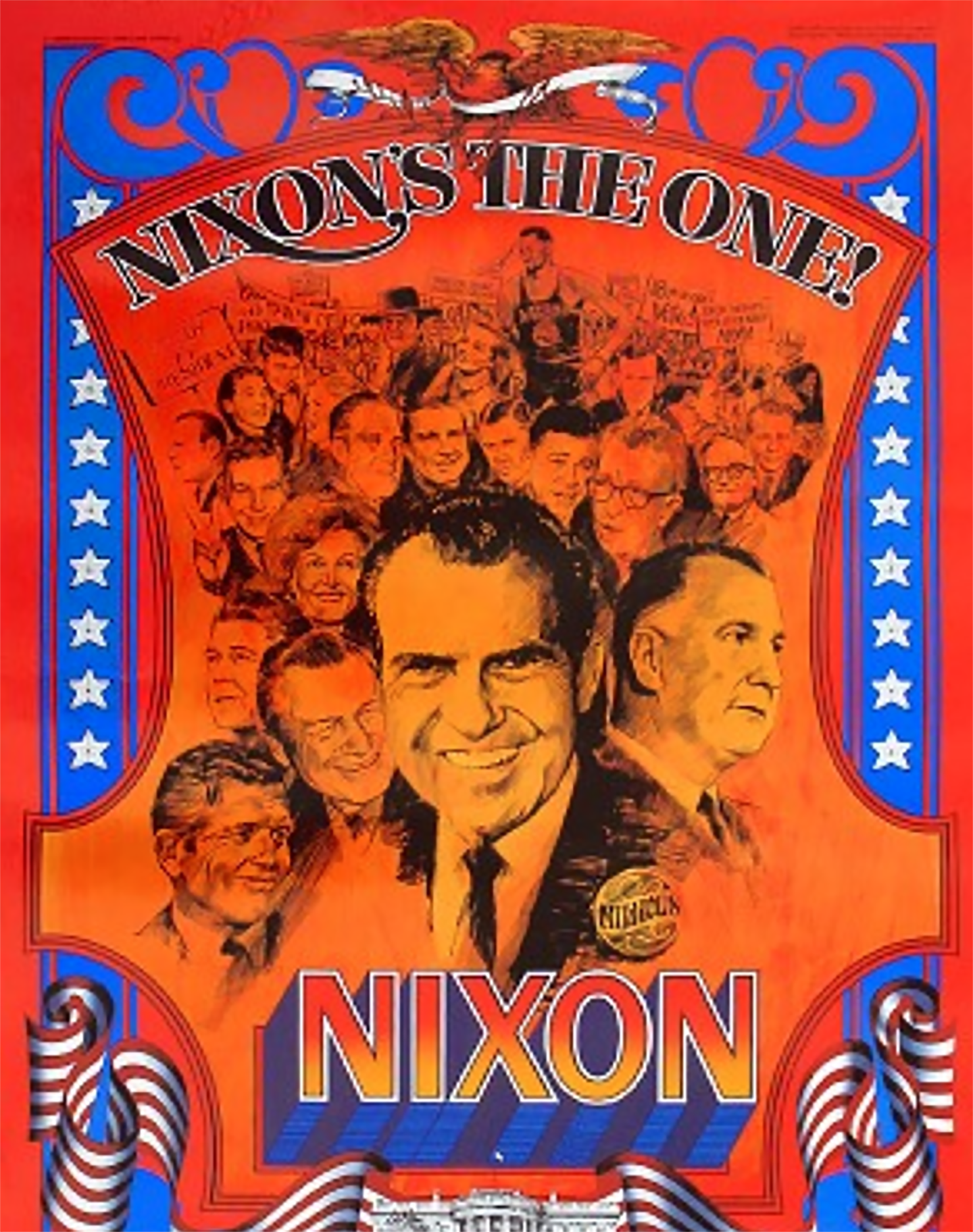
I was a Republican by birth and by God. It was a family thing; my grandmother had been a cookie baker for GOP functions in Imperial County for years, and she had worked as an aide to some dope who got elected to the Assembly. I helped her stuff envelopes, hung campaign literature from doorknobs. I even parked cars at an Earl Butz function.
I was a Young Republican just as I was also a Roman Catholic. Some things in life are simply beyond our control. (Which is how Ivana Trump ended up buried in a golf course, I suppose.)
In 1972, I was an 18-year-old pipsqueak, a useless and entitled bumpkin blessed with a high draft number and with a simpleton’s understanding of the world around me. These days, my 18-year-old self would occupy the dead dread space of a Trump rally. That’s where my head was in 1972.
But then I shook Spiro T. Agnew‘s hand at one of those garden parties at the Fontainebleau Hotel and it changed my life. And then I avoided a civics seminar that featured H.R. Haldeman and John Ehrlichman and I learned the power of saying “hell no.” And when I slipped away to nearby Flamingo Park to commune with the hippies and the yippies, the sunshine changed my perspective.
I was a Young Republican just as I was also a Roman Catholic. Some things in life are simply beyond our control.
I recently browsed through about 10 hours of YouTube footage of NBC’s coverage of the 1972 Republican National Convention. Black and white. John Chancellor and David Brinkley: solid newscasters both. I FF’d through most of the convention speeches because my tolerance for yakkety-yak and empty rhetoric has worn thin during the past five decades. But I stopped to watch the crowd shots and the floor interviews. I hoped to validate my 50-year-old memories of the experience.
I had seen a three-part PBS series about the Nixon Administration 20 years ago. In a flash I happened to catch a fleeting glimpse of 18-year-old me floating through a joyous crowd of Republicans on the convention floor celebrating the re-nomination of a scoundrel. It was an eerie sensation, to watch myself in a moment of dipshittery on national TV.
But the YouTube/NBC News thing was a full immersion in that black-and-white past. I wasn’t looking for myself, but I did find what I was looking for, the familiar rogues smiling broadly in their element: the entire Nixon family, Spiro and his crew, Kissinger and Haldeman and Ehrlichman, Nelson Rockefeller. And there was more: the demonstrations for Nixon orchestrated to look spontaneous, party bosses slapping one another’s backs, important men smoking pipes, wannabe important men smoking cigars, delegates dancing in the aisles wearing goofy hats, earnest Young Republicans, Sammy Davis Jr. embracing Richard Nixon.
One of the NBC floor reporters, Tom Pettit, caught up with a clot of Young Republicans on the third night of the convention. As they made their way into the convention arena earlier that evening, the Nixon conventioneers had to be escorted past an army of yippies, hippies and trouble-makers. The agitators were making a scene, setting garbage cans on fire and whatnot. Some of the Republican delegates suffered the collateral discomfort of dissipating tear gas. Once inside, Pettit asked a couple of Young Republicans about the differences that separated them from the young demonstrators outside.
“I think the biggest difference between us and the demonstrators is that we are — as they are — we are idealistic,” said one of the kids, looking thoughtful and non-Republican in his John Lennon glasses, a headband and muttonchop sideburns. “But the difference is that we are willing to work to make change rather than merely talk about it and chant about it. And I think that we can make change by getting out and doing the dirty work that has to be done to bring about change, rather than breaking windows and tearing down things.”
This muttonchop guy was the perfect PR spokesman for the Young Republicans. He was sort of a groovy guy — like he’d finally showered after a year in Haight-Ashbury — and he was groovy for Nixon.
Enlarge
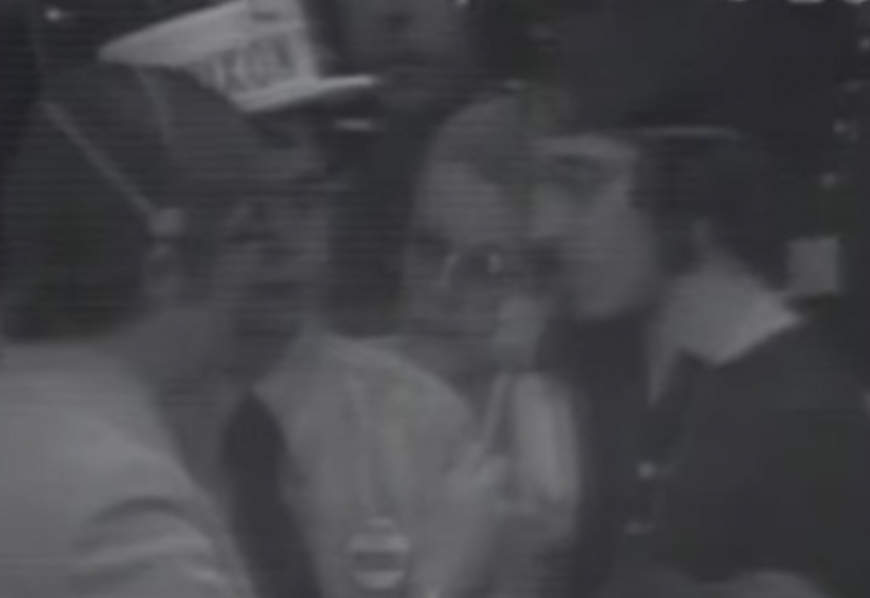
NBC News screenshot
The convention itself was a snooze. Before the 1970s and the demystifying manipulations of primary elections, political conventions were packed with tension, drama and back-room politicking. But there was none of that in Florida. Nixon was up for reelection — “Four More Years” — and he had drawn only the nominal challenge of an anti-war Republican named Pete McCloskey. Nixon was the Republican Party. A month earlier in the same arena, the Democrats had selected George McGovern as their standard bearer, but the convention drama was a train wreck, with a lot of Democrats screaming across the aisles at one another. (Some things never change, I suppose.) There was a sense that Nixon’s second term would be a slam dunk.
The spectre of Watergate hung in the distance, but no one was giving the scandal the attention it deserved. Not just yet.
The 1972 Republican National Convention was mostly staged as a party for Nixon, but it promised to be a mirthless celebration. When planning a convention without drama, the GOP brain trust knew that only delegates — and their mistresses, girlfriends and pelvic affiliates — would waste their time at such an event. They feared the TV cameras would linger over thousands of empty seats. So the GOP decided to infuse the place with giddy enthusiasm, flying in a bunch of fresh-faced kids who wouldn’t be embarrassed to be seen dancing the night away to Up With People or the Mike Curb Congregation.
We were young Republicans and we had a job to do. We were there to fill seats. From sea to shining sea, dolts like me gathered in Miami Beach to sit our asses down for Nixon.
We were young Republicans and we had a job to do. We were there to fill seats. From sea to shining sea, dolts like me gathered in Miami Beach to sit our asses down for Nixon.
My California contingent of Young Republicans was booked in a decrepit old hotel on the strip along the beach. I was thrilled — a room with a beach view! — but the place wasn’t up to snuff for a certain class of Young Republicans who were accustomed to the finer things in life. Several leaders emerged to demand improved accommodations. The presence of cockroaches and lingering odors were cited. Someone spread a rumor that the hotel had housed a delegation of “welfare queens” who attended the Democratic National Convention a month earlier. Republican kids deserved better.
A standoff ensued as our GOP minders attempted to quell an uprising in the hotel lobby. Efforts to prey on our sense of national duty were employed; we were reminded that we weren’t in Miami Beach to bask on the beaches with our rum drinks and our Harlequin novels. We were there to work for Nixon, dammit. So get over it.
The shrill howls of entitlement echoed across the hotel lobby as a Young Republican insurrection brewed.
And then, as if on cue, someone on the second floor flushed a toilet. From the lobby we heard a grumbling disruption of ancient plumbing. And a pipe burst through the ceiling and water rained down upon us.
Within a couple of hours we were bused to a Holiday Inn across town.
Enlarge
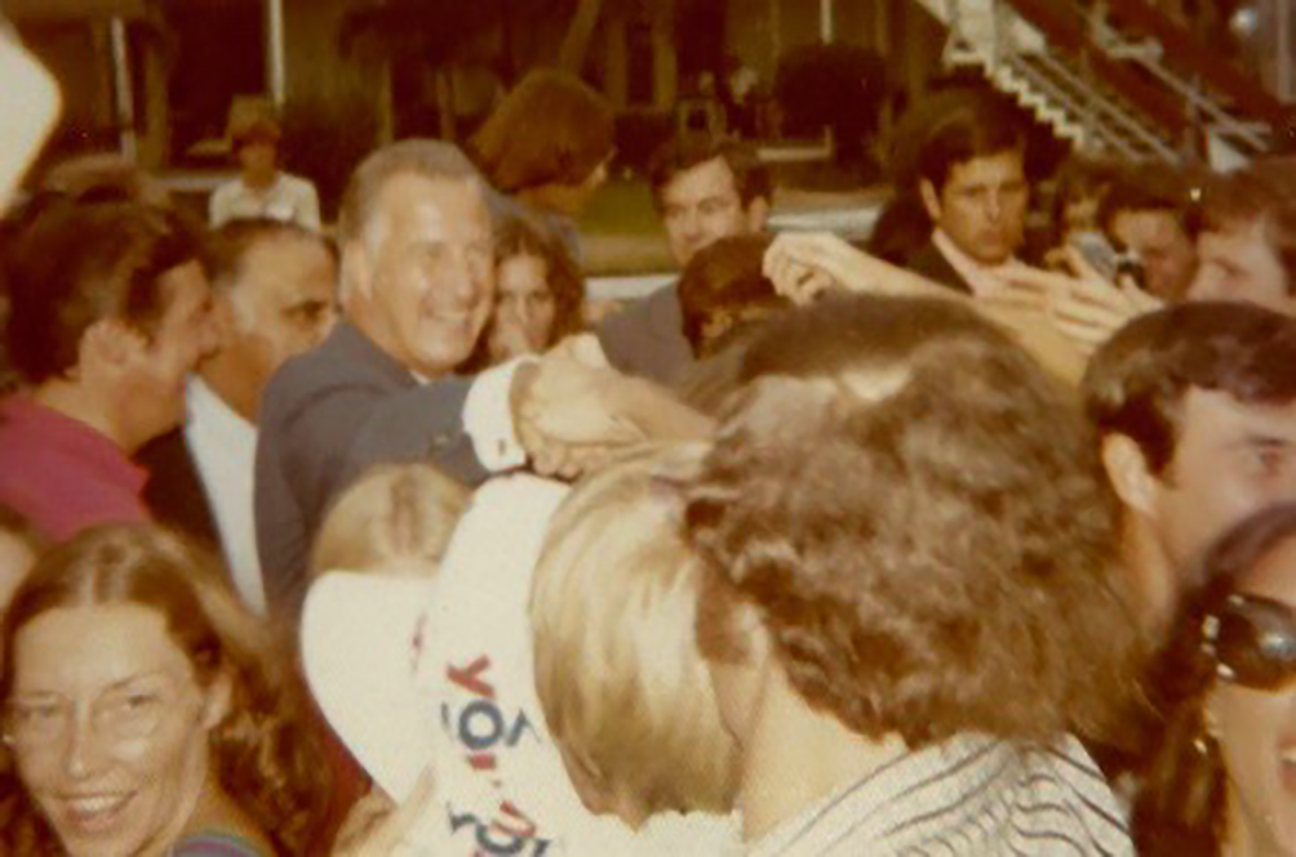
Photo by Joe Livernois
Our official business took us from one tacky cocktail party to the other. We filled seats. We were friendly enthusiasts. I recall a lot of parties, hosted by state delegations, lobbyists and money. If I learned anything during my week as a Nixon soldier, it’s that Republicans loved their hooch.
It was our job to mingle without making a nuisance of ourselves. Sometimes we weren’t even allowed inside, but were instead lined up on the sidewalks along the front entries of exclusive hotels to wave signs and to cheer GOP dignitaries as they slithered out of their limousines. Often we had to pretend we knew who the dignitaries were. (Which is how I ended up with Elliot Richardson’s autograph, I suppose.)
We were also bused to the arena, allowed entry with our special passes. My friend Steve and I filled a couple of seats on the first night of the convention. We were doing our jobs. They weren’t bad seats, either: second deck of the arena, but two rows back.
Steve was one of the good guys. He and I had been pals since as far back as I can remember. We’d manage to slip away now and again to bargain with the scene at Flamingo Park, so we were properly loaded for a night of conventioneering. Steve wore his straight hair long — halfway down his back — and he spent his entire time in Miami Beach wearing a palm-leaf conical hat called a non la, a traditional symbol of the Vietnamese nation. The hat attracted attention, of course. Steve ended up on network television a few times because he stood out like a carnival curiosity.
Steve and I settled into the second row, feeling lucky because the seats in front us were empty. We draped our legs over the backs of the chairs and got comfortable. But then, just before Gerald Ford called the convention to order, John Wayne and Sammy Davis Jr. showed up and glared at us for smudging their seats with our dirty shoes. We removed our legs from their space and they settled in while everyone around us murmured with excitement. John Wayne! Sammy Davis Jr.!
A couple of days later, Davis became the sensation of the entire convention when he was seen on stage at a Young Republican concert — a concert I somehow missed — embracing Richard Nixon as though Nixon was the best friend a Black man could ever have.
Enlarge
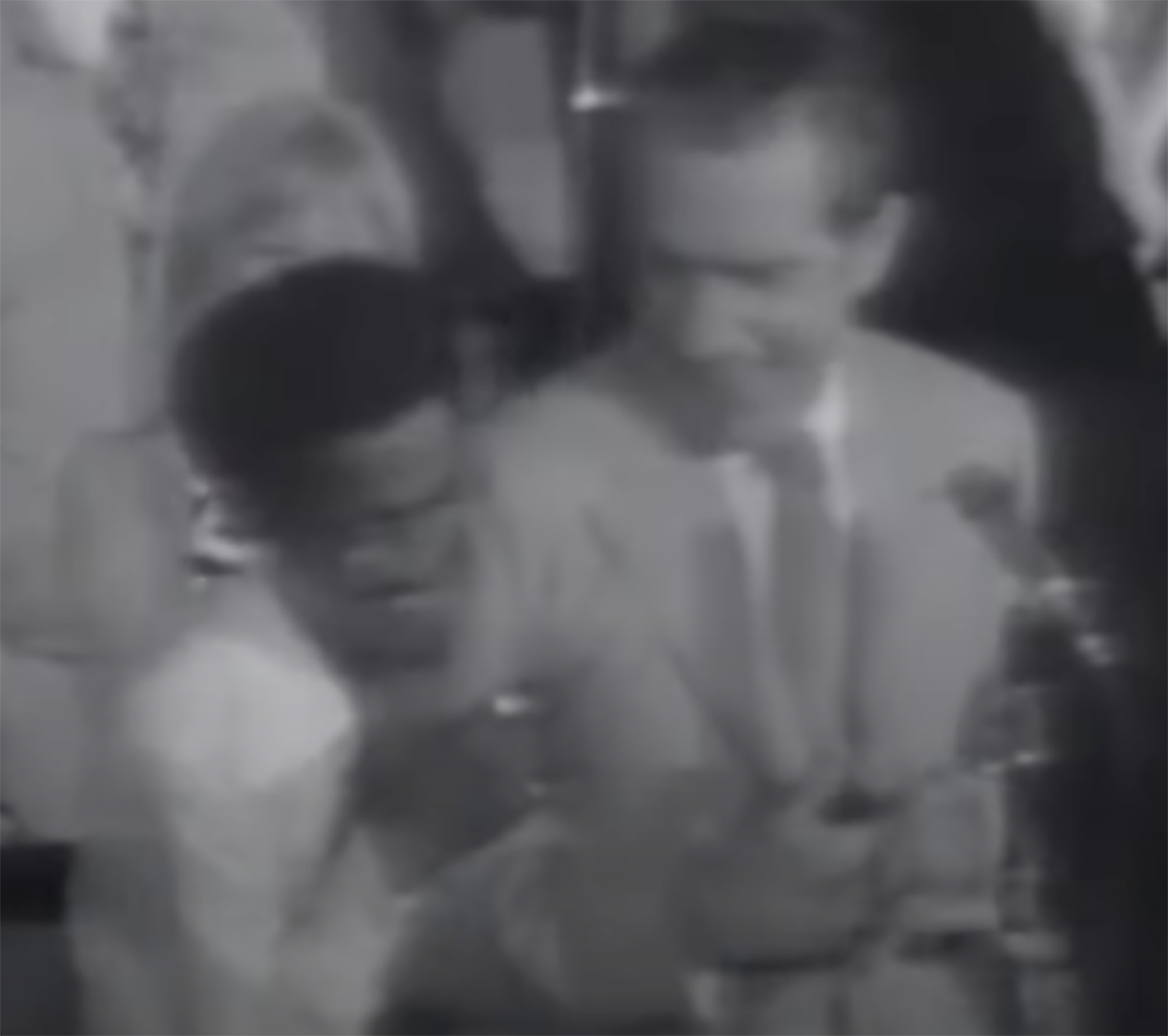
NBC News screenshot
On the second day, I was bused to the Fontainebleau to fill out the crowd for an exclusive poolside soiree to honor Spiro Agnew. I recall a lot of martini glasses and older men making grunting noises. I hung out near the bar because that’s where all the happy grunters seemed to be.
Spiro Agnew was fashionably late, or course. (A person tends to lose track of time when he’s occupied with bribery and extortion, I suppose.) His eventual appearance set off some Sammy Davis-level excitement around the Fontainebleau. I weaseled my way out of the bar to get a look. The vice president made his way through a gaggle of exuberant Agnew enthusiasts, and their energy carried him toward me. There was no avoiding him.
I held out my hand and he shook it.
I haven’t been the same since.
Enlarge
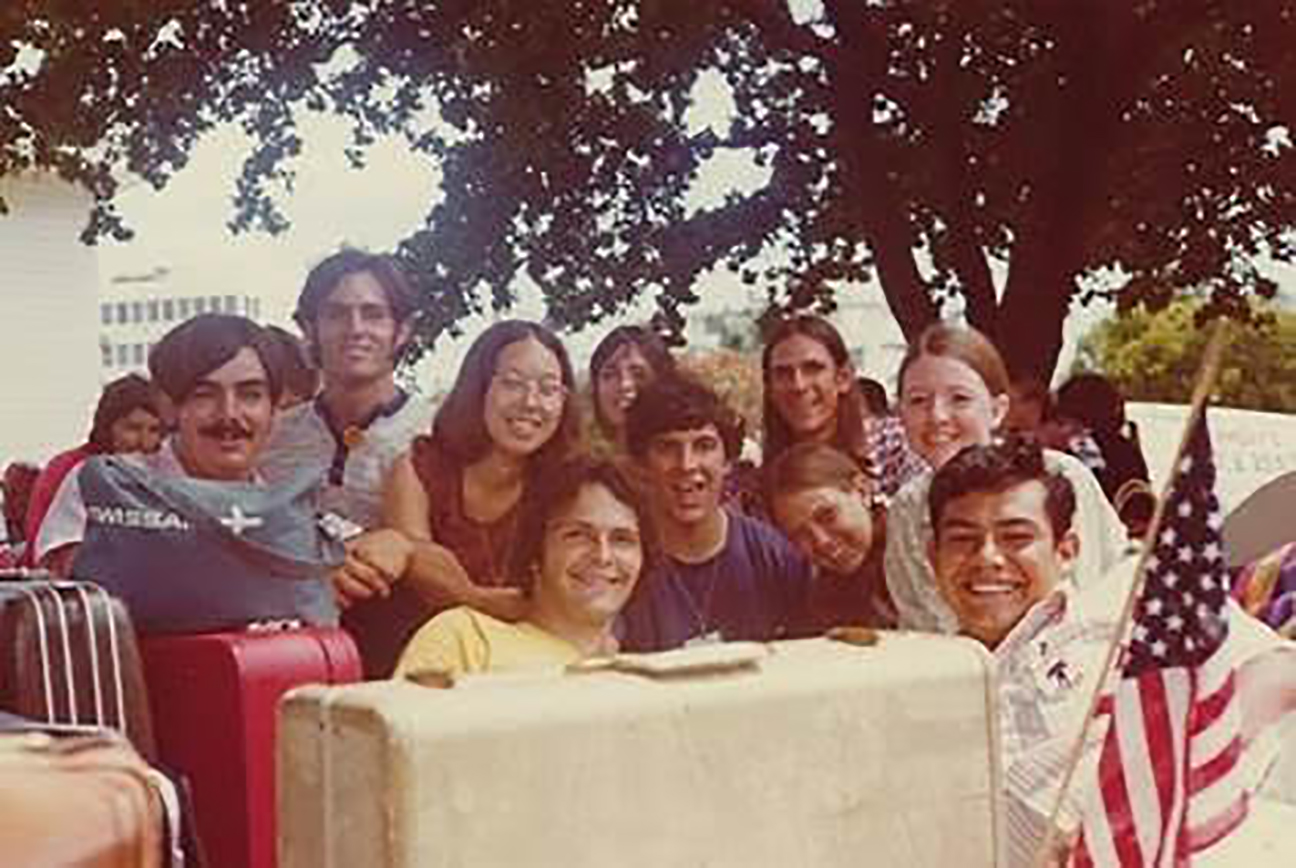
Have something to say about this story? Send us a letter or leave a comment below.